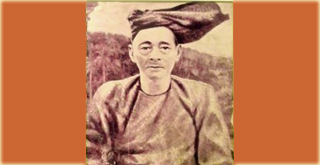
Sultan Sir Abdul Samad ibni Almarhum Raja Abdullah was born in 1804 at Bukit Melawati in Selangor. He was coronated as the fourth Sultan of Selangor in 1857 after several disputes tochoose the next Sultan. The third Sultan of Selangor, Sultan Muhammad Shah, died without appointing an heir.
HIS CHARACTER
His time on the throne saw the only civil war in Selangor. But Sultan Abdul Samad managed to control the situation with his patience. Sultan Abdul Samad interacted openly with his people as observers noted that he mingled by chatting in local markets, while taking his daily walks.
HIS REIGN
After a number of piracy attacks took place in Selangor, Andrew Clarke assigned Frank Swettenham as a live-in advisor to Sultan Abdul Samad in August 1874. Sultan Abdul Samad accepted James Guthrie Davidson as the first British Resident of Selangor in 1875. In October the same year, Sultan Abdul Samad sent a letter to Andrew Clarke requesting for Selangor to be placed under the British protectorate. This marked the start of British involvement in Selangor state affairs.
During his reign, the areas of Semenyih, Beranang and Broga went under Selangor jurisdiction. Lukut however was handed to Dato' Kelana of Sungai Ujong on 30 July 1880. Jugra became the royal capital of Selangor when Sultan Abdul Samad built the Jugra Palace and moved there in 1875. The state capital was moved from Klang to Kuala Lumpur in 1880. The Sultan declared Kuala Lumpur as the capital city of Selangor.
A State Meeting Council (Majlis Mesyuarat Negeri) was formed in 1877 and it was used as a platform to discuss on Malay affairs. Sultan Abdul Samad was in favour of appointing the royalties to carry out official duties. The government introduced a system of land
registration and to collect quick rent.
In July 1896, the Government appointed the British Government to set up the Malay Federated States. A year after, Sultan Abdul Samad attended the First Malay Rulers of the four states of Selangor, Perak, Negeri Sembilan and Pahang which convened in Kuala Kangsar, Perak.
DEATH
Sultan Abdul Samad died on 6th February 1898 at the age of 93 after reigning for 41 years. He was laid to rest in his own mousoleum in Jugra. He was blessed with 12 children, 6 princes and 6 princesses from two wives. Raja Muda Musa, the heir apparent, died in 1884. Due to this, the next in line was Raja Muda Musa's eldest prince, Raja Sulaiman.
HIS CONTRIBUTION
Transportation
In 1890, railways were built linking Kuala Lumpur, Bukit Kuda and Klang. After the opening of tin mines, the railway routes were later extended to Rawang and Kuala Kubu and in thesouth, the railways were able to link Pudu and Sungai Besi. Roads were also built linking the villages to the mining areas.
Education
In 1893, he helped found one of Malaysia's premier schools, Victoria Institution in Kuala Lumpur. Sultan Abdul Samad was made one of the first two patrons of the school. Sultan Abdul Samad contributed sum of money to build the school. The purpose of building the school was to provide English education for the locals and later to fill up posts in the Government of Selangor. It was said that Sultan Abdul Samad also built a Malay school at Bandar Termasa (Langat) using his own money.
Agriculture
The Sultan together with his son Raja Kahar, involved himself in cultivating fruits. He also planted other crops like sugarcane, paddy, coconuts and betel nuts on 1,000 acres of land. He even lent some money to paddy planters to start off their business.
LEGACY
The Sultan Abdul Samad Building in Kuala Lumpur, Sultan Abdul Samad Secondary School in Petaling Jaya and the Sultan Abdul Samad Library in Universiti Putra Malaysia are named
after him.
(SOURCE: WIKIPEDIA)
Updated:: 20/04/2022 [j_mohdshahril]
MEDIA SHARING
















.png)





















